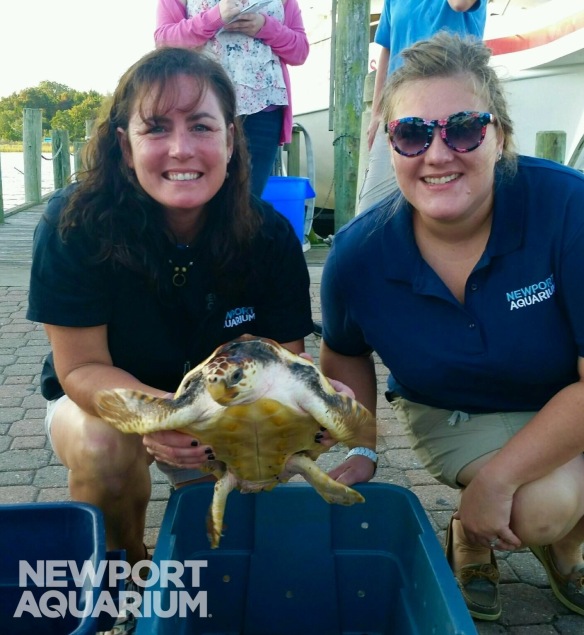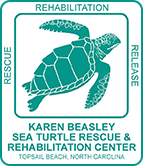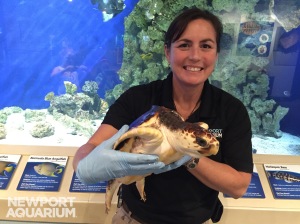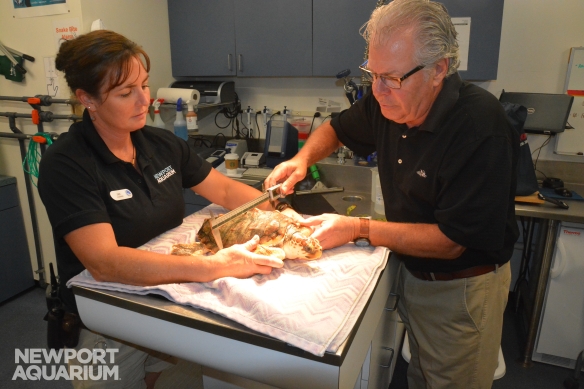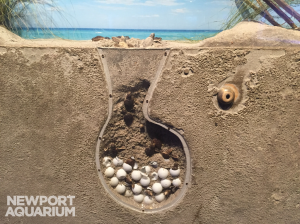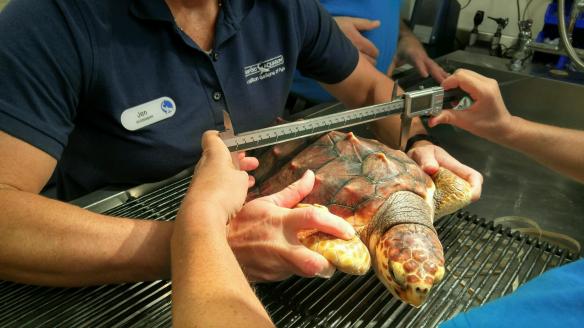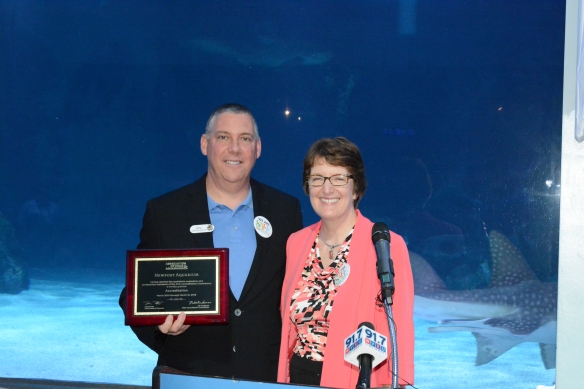Happy World Sea Turtle Day! Say hello to Frank, Newport Aquarium’s resident loggerhead sea turtle rescue!

Frank the Loggerhead Sea Turtle was rescued from North Carolina and will be returned to the ocean in October.
Every year, biologists at Newport Aquarium rescue a loggerhead sea turtle hatchling from North Carolina as part of the North Carolina Sea Turtle Project. Volunteers watch the sea turtle nests to look out for any stragglers who remain in the nest after the other hatchlings have made their way to the ocean.
Here’s a slideshow of images from last year’s hatchling release:
The volunteers rescue these stragglers and send them to aquariums and other organizations around the country for rehabilitation.

We joined teams from Mystic Aquarium, Adventure Aquarium (our sister aquarium), Virginia Aquarium, National Aquarium in Baltimore, and NC Aquarium at Pine Knoll Shores.
Frank is one of those hatchlings, and he’ll be here at the Newport Aquarium until he’s returned to the ocean this October.
How Did Frank Get His Name?
Frank may seem an unusual name for a turtle, but there is an inspiring namesake behind it!
According to Senior Biologist Jen Hazeres, Frank was named after a very sweet gentleman who was on the boat that went out with her and Water Specialist Cameo VonStrohe to get the sea turtles. As you can guess, the man’s name was Frank!

Last fall, Jen and Cameo returned Shack, our previous rescued loggerhead sea turtle, back to the ocean.
He was there with his sisters, who were volunteers helping with the turtle rescue. Frank, who has Down’s syndrome, had accompanied them on the trip to see the turtles. Hazeres and VonStrohe got to know them and their story during the trip, so when it came time to name their new turtle, they knew what name they wanted to choose.
“We’re always looking for inspiring stories to help us name our animals,” Hazeres said, “So when we got our new turtle, we asked if we could name him after Frank.”
Just Keep Swimming
As part of the rehabilitation process, our biologists and veterinarian take regular measurements and give regular check-ups to Frank.
“We have a growth chart that we’re required to follow,” Hazeres said, “and Frank is right on track with where he should be.”
According to Hazeres, Frank is a naturally strong swimmer and diver, which is great news for when he returns to the ocean later this year.
“He’s been diving ever since he got here and we put him in the water,” Hazeres said. “He’s also a superior swimmer for his age, compared to past turtles we’ve had.”
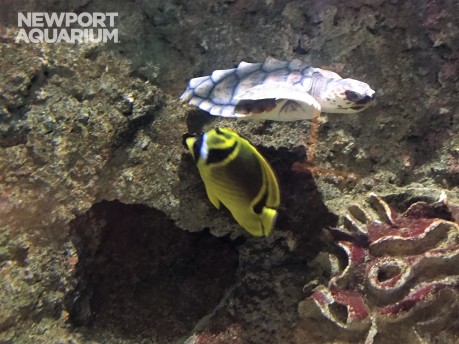
Usually, it’s a longer process to make sure that the baby turtles are on par with the swimming and diving abilities they need to survive in the wild, but Frank has been a natural swimmer right from the start, and he’s only improved since!
What Happens Next?
Hazeres and the other biologists will continue monitoring Frank and looking after him during his time here at Newport Aquarium. Frank is fed a diet of an aquatic sea turtle gel food each morning, and in the afternoons, he’s fed fish, squid, or other types of food he’ll likely eat in the wild.

Frank receives regular vet visits as part of his rehabilitation.
As he grows bigger and stronger, he’ll eventually be moved to the larger tank in the Shore Gallery, next to Shark Ray Bay Theater, so he can continue practicing his diving and swimming.
You can visit Frank in the Shore Gallery until he is returned to his home in the ocean this October!

